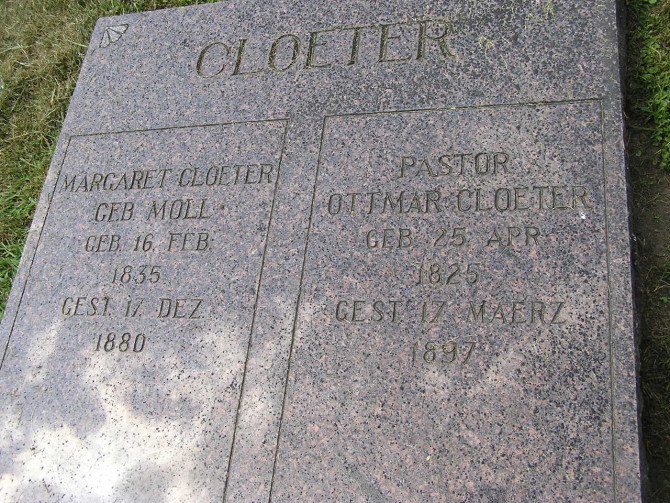“Five pioneer Lutheran pastors went to Minnesota from the East with the immigration into the ” Suland,” that extensive domain west of the Mississippi that was opened to settlement In 1851 by the treaties of Traverse des Sioux and Mendota. A sixth, a missionary among the Indians, was the only one who was placed in his work by the definite action of a German Lutheran synodical body”. So begins a wonderful article by Esther Abbetmeyer Selke from Dickinson North Dakota. The article entitiled “Pioneers of German Lutheranism in Minnesota” (collections.mnhs.org/MNHistoryMagazine/articles/). She also wrote “Missouri Synods First Chippewa Mission in Minnesota” for the Concordia Historical Institue Quarterly 3:20-25. Here is a small summary.
In 1857 a letter was written in what would become the “Lutheran Witness” that a missionary was needed to go to work among the Chippewa. The Reverend Ottomar Cloeter, in response to this appeal, volunteered to go. With his family, he left Saginaw City, Michigan, on May 28, 1857, for Crow Wing; and after journeying by express, emigrant train, steamboat, wagon, and canoe, he arrived there on June 12. A missionary named Miessler, accompanied Cloeter in order to introduce him to the Indians; and Henry Craemer, the son of a former missionary to the Chippewa In Michigan, went with the party to serve for a time as interpreter. About 14 miles north of the present site of Brainerd,” writes his son, “you will find on the west side of the Mississippi river a lake, or rather two twin lakes. They are about one mile west of the river and run parallel with the river for about 8 miles. The Indians called this strip of land Gabitaweegama, meaning parallel waters. On this strip of land father settled, and gave to this mission station the name of Gabitaweegama.” Cloeter, in a letter of May 5, 1858, tells of living at ” Kabitawlgama,”, he mentions war parties of three hundred Chippewa going out to fight the Sioux. In another communication he gives an interesting account of a trip to the Pillager country.
By 1860 Cloeter was much discouraged with his mission work; he found it all but impossible to explain the Gospel to the Indians and he complained that they persisted in their ancient modes of thought. Nevertheless, he continued his labors at Gabitaweegama until the Sioux Outbreak in August, 1862, when life seemed no longer safe even in the Chippewa country. A friendly chief aided the missionary and his family, who fled from their home, leaving nearly everything behind. They wandered for three days in the woods before they reached Fort Ripley, eight miles south of Crow Wing. Cloeter did not return to Gabitaweegama after the outbreak, but with Crow Wing as his headquarters he continued his mission for a time. Acting on a resolution of the Missouri Synod to carry on the Indian missions until ” the Lord Himself should stop them”. In 1868 the committee on missions of the Missouri Synod regarded the work of the mission ended.
Cloeter went on to become the President of the LCMS’s Minnesota and Dakota District 1882-1885.
Missionaries from the beginning of our church body were sent by Synod Boards.


